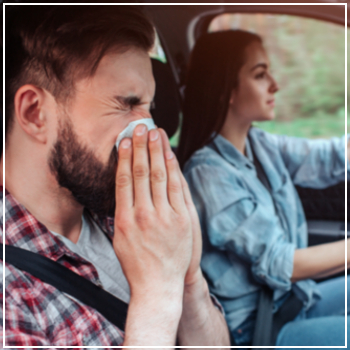 You know spring has arrived when you spot a visible layer of pollen on your car! At the beginning of the season, trees that bloom release a large amount of pollen. This yellow-colored dust spreads through the air and settles on all sorts of surfaces, including your car. If it’s a particularly windy day, you might see even more of the powdery substance accumulating on your vehicle’s exterior.
You know spring has arrived when you spot a visible layer of pollen on your car! At the beginning of the season, trees that bloom release a large amount of pollen. This yellow-colored dust spreads through the air and settles on all sorts of surfaces, including your car. If it’s a particularly windy day, you might see even more of the powdery substance accumulating on your vehicle’s exterior.
Most people think pollen is relatively harmless and to an extent, it is. However, if you let it remain on the surface of your car without washing it off, it may end up damaging the paint.
Beyond your car’s surface, pollen can end up inside when you leave the windows down or it could pass through an older, ineffective cabin filter. To reduce your car’s exposure to pollen, don’t wait for the rain to wash it away. Instead, make a plan with the following tips.
Park Your Car Indoors
If you have a garage or carport, now’s the time to use it. Instead of parking in the driveway or on the sidewalk, an enclosed space can drastically reduce the amount of pollen your car picks up.
Yet, this strategy is not absolute. Especially if you drive with the windows down or your carport isn’t fully enclosed, pollen can still get inside or build up on the surface.
Wax and Wash
Washing your car removes any of the pollen that has settled on the surface. Then, waxing creates a protective barrier for your car’s paint. Should pollen come in contact, it will simply slide right off the car the next time you wash it.
During the spring season, get in the habit of washing your car every one to two weeks. Using an appropriate sponge or cloth, go over the paint job, glass and wheels.
Also, since the wax coating you put on for winter has likely thinned out, have this or a sealant professionally applied to the interior to create the barrier you want against pollen.
Don’t Ignore the Interior
Pollen accumulation inside your car can aggravate allergies. Generally, two processes are behind this effect. You open your windows as you drive, allowing pollen particles to fly inside. Particles can also pass through the cabin filter, particularly if it needs to be replaced. As a third factor, accumulating pollen and other debris can contribute to the inefficiency of your car’s heater and air conditioner.
Considering these factors, you can limit your exposure to pollen through the following methods:
- Limit driving with your windows rolled down.
- If your car is parked, keep the windows fully rolled up.
- Get a thorough interior detailing to remove any pollen and debris accumulating in the cabin.
- Have the cabin filter replaced according to your maintenance schedule – about once per year or more frequently, if you live in dusty conditions.
If you’re concerned about the effects pollen can have on your vehicle or are looking to eliminate allergy triggers, reach out to DaSilva’s Auto Body for interior and exterior detailing. To learn more about our services, contact our Naugatuck shop today.




